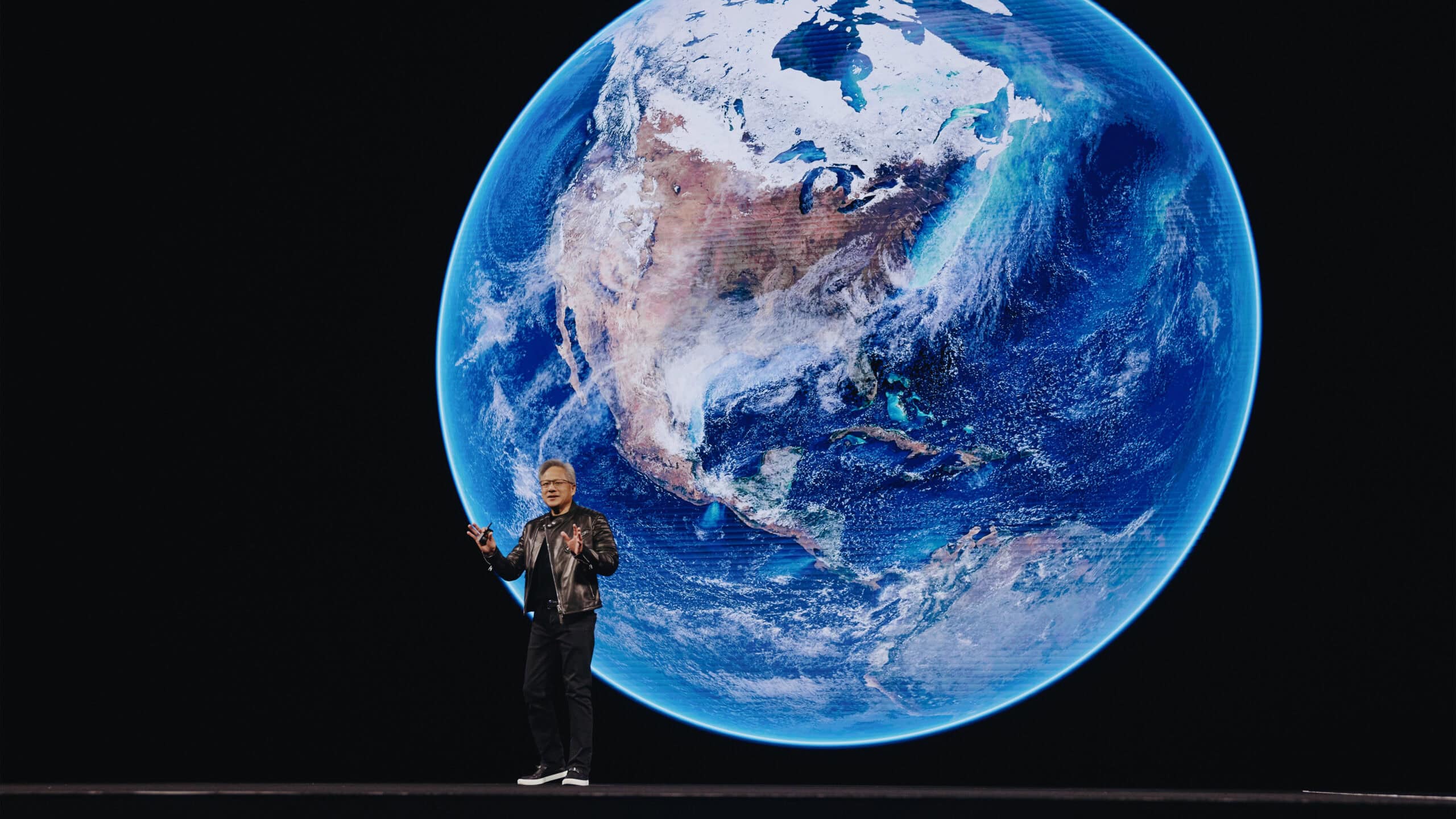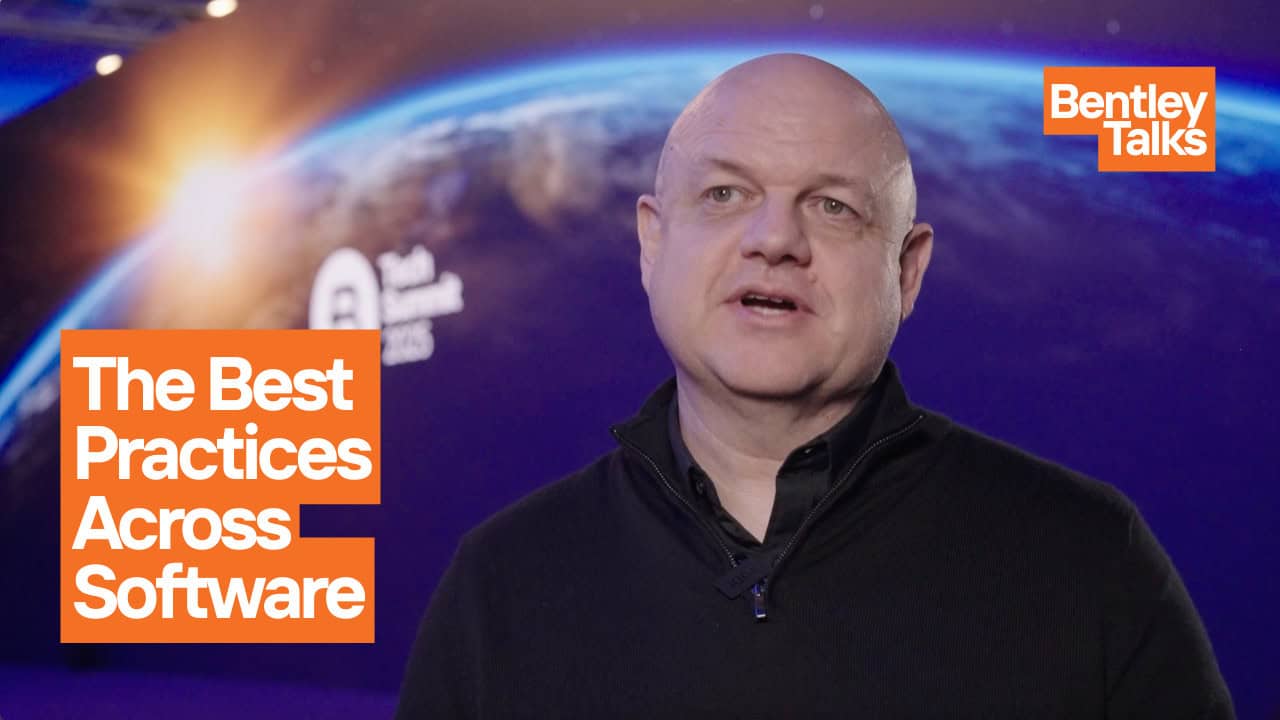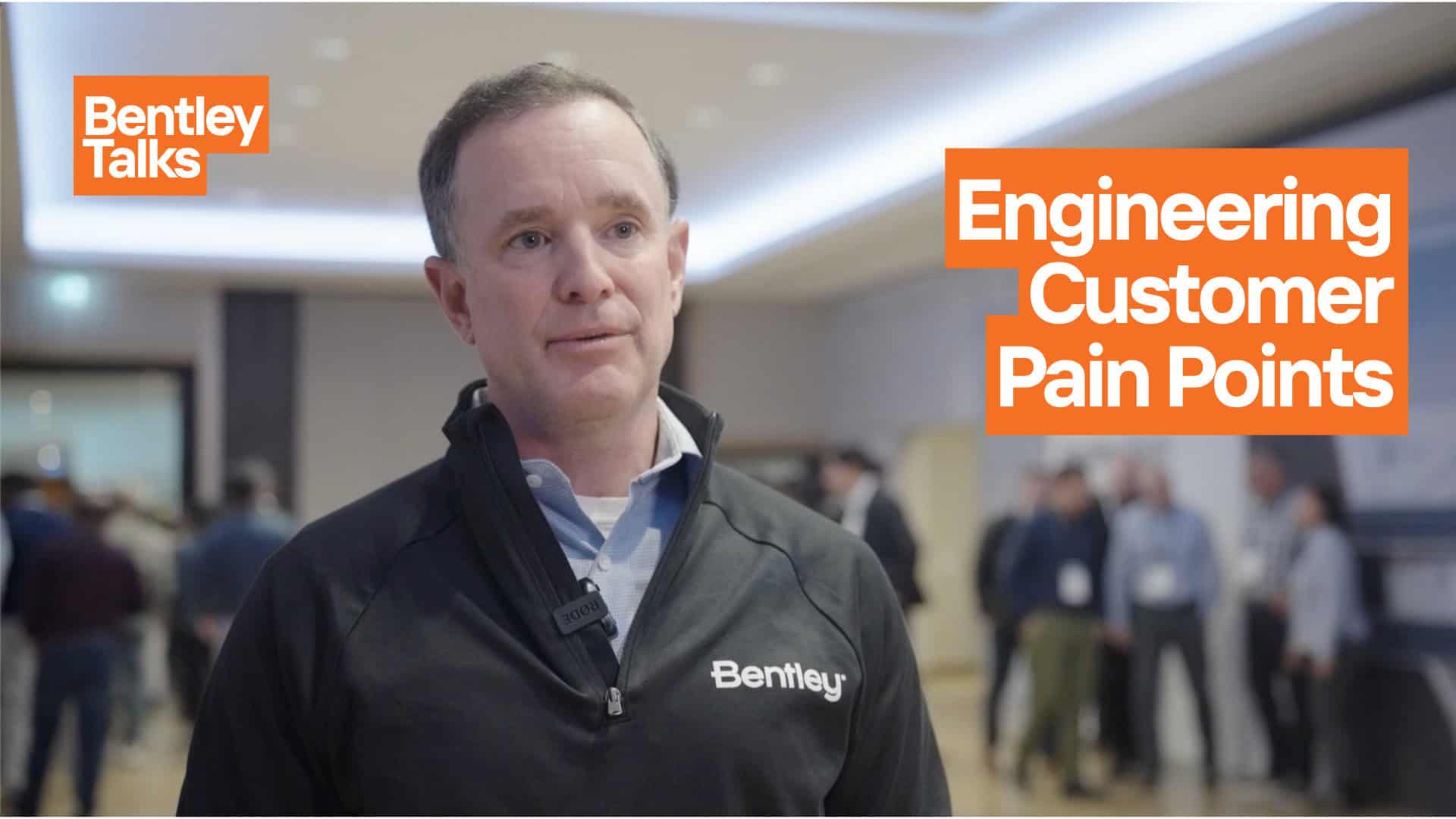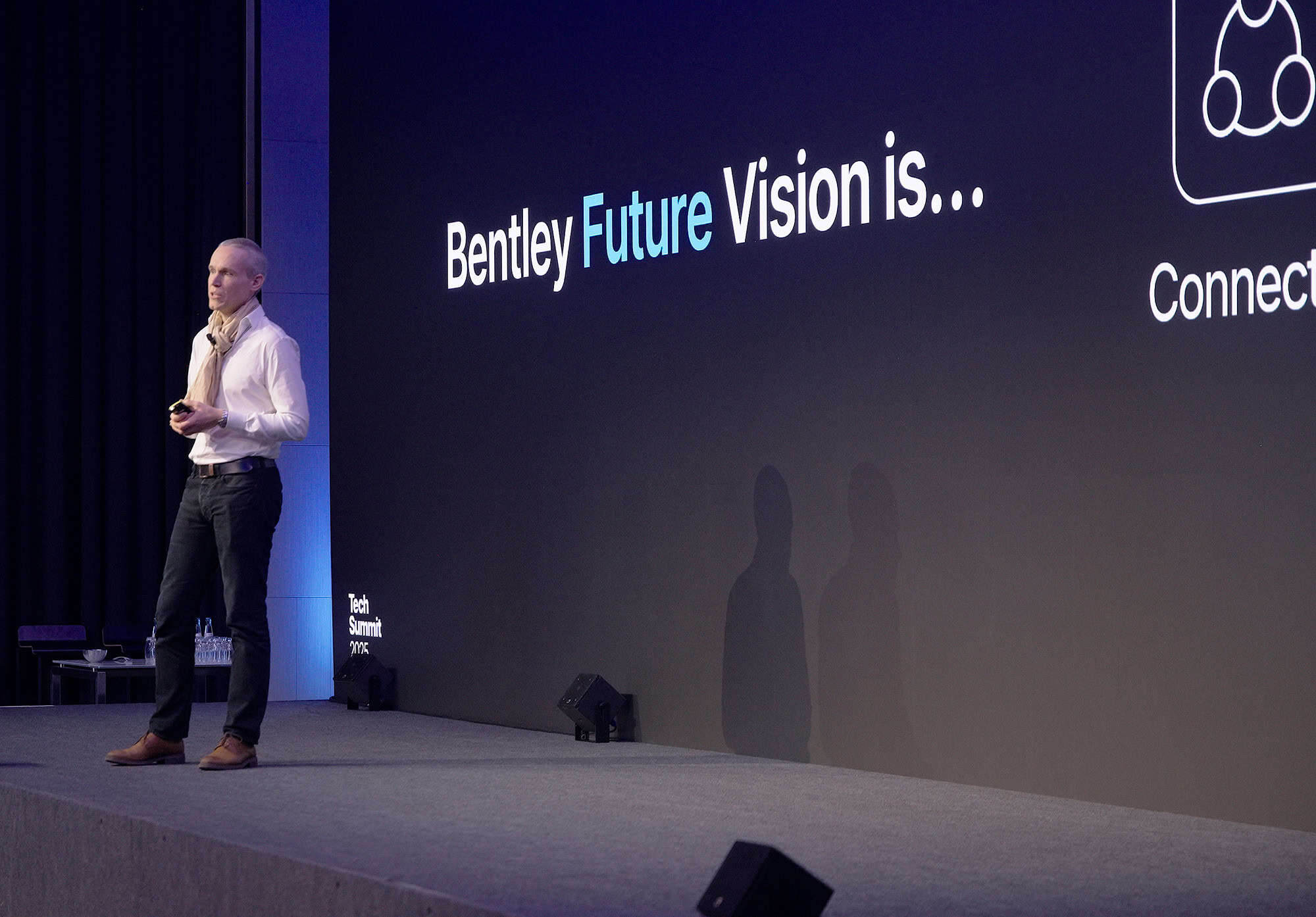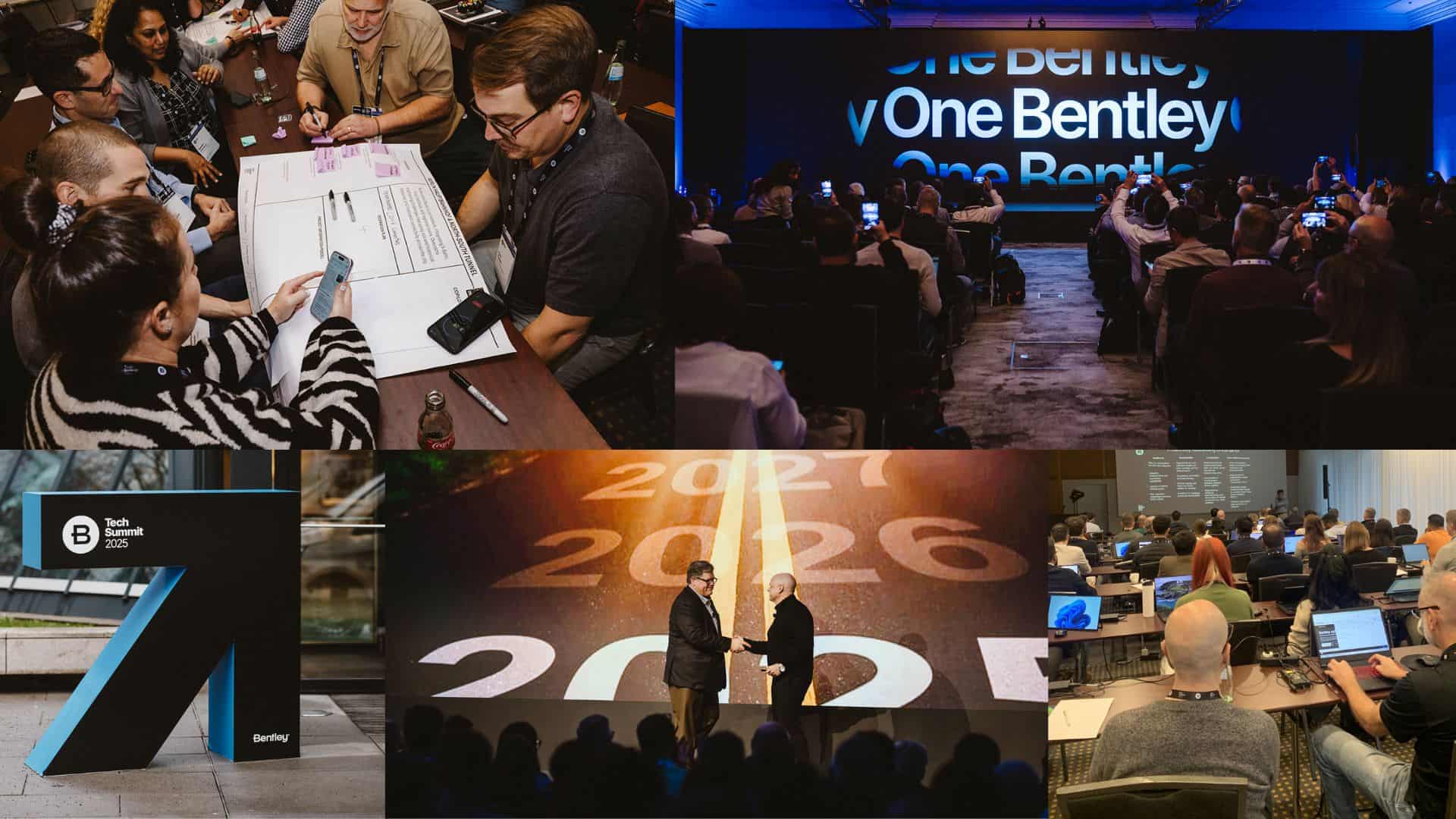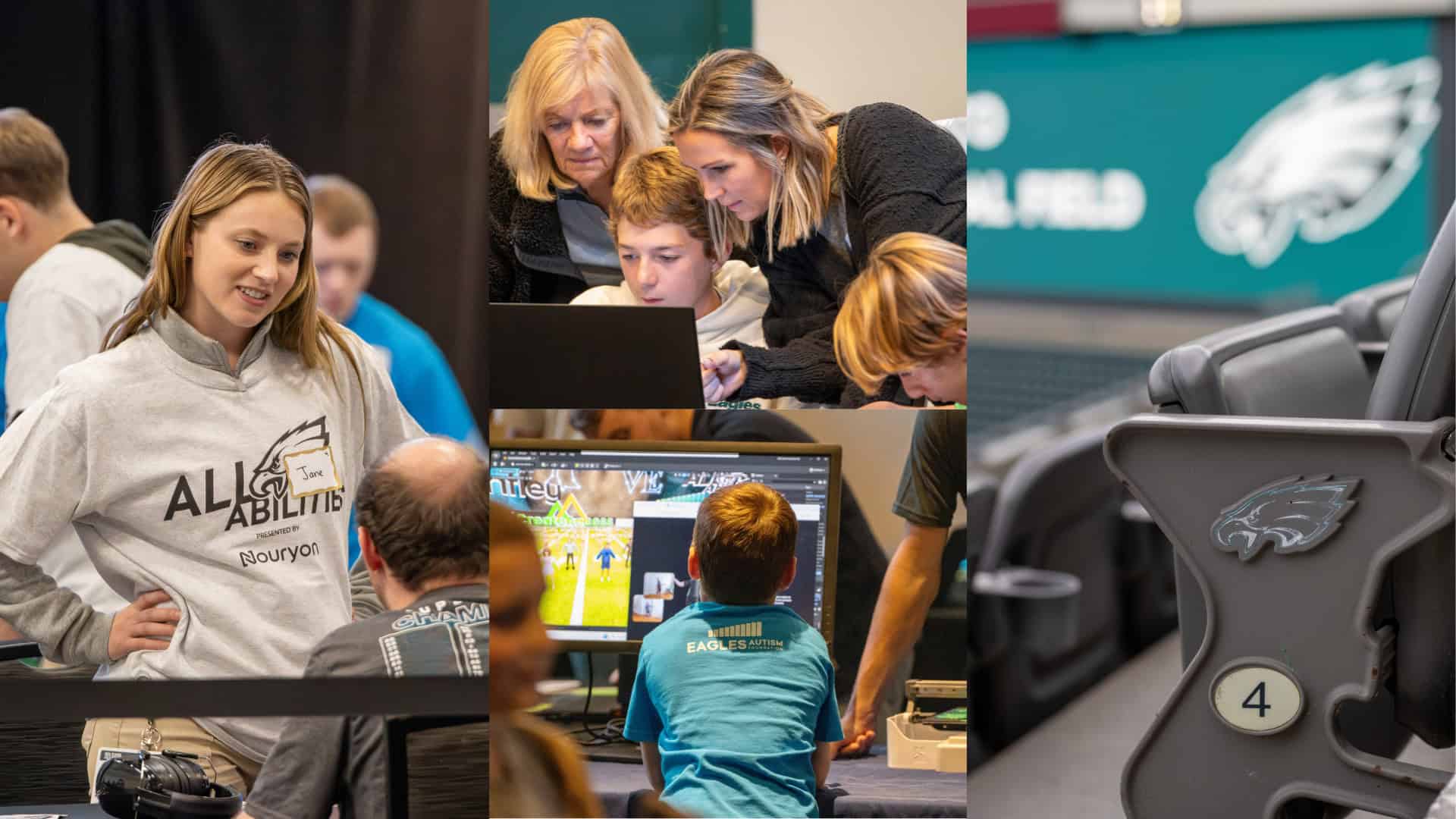Some 25,000 people recently flocked to San Jose, California, for Nvidia’s GTC AI Conference. Informally known as “AI Woodstock,” the event featured Nvidia CEO Jensen Huang, who talked about the semiconductor giant’s latest AI chips, and AI pioneers and luminaries in artificial intelligence (AI), like Meta’s Yann LeCun, Caltech’s Frances Arnold and Mistral AI’s Arthur Mensch. “It’s essentially the AI conference,” says Francois Valois, vice president for Open Applications at Bentley Systems, the infrastructure engineering software company. “There’s no better forum to talk about AI because everyone working on generative AI is using Nvidia chips.”
That includes Bentley, a leader in applying AI to infrastructure engineering. Valois flew to San Jose to speak on a panel addressing the role of AI and data in shaping architecture, civil engineering, construction and infrastructure maintenance. His team developed and launched Bentley’s groundbreaking AI and generative AI products like OpenSite+. This design co-pilot is already helping site civil engineers to reduce the cost and the environmental impact of data centers, industrial facilities and other large construction projects.
Joining Valois on the panel, which was hosted by Nvidia, were experts from the design software firms Autodesk, Nemetschek and Trimble. Valois discussed the AI applications that Bentley created to address the infrastructure sector’s dire shortage of engineers. He noted that the solutions are aimed at improving productivity by automating mundane design tasks and provide insights during construction and maintenance—especially when integrated with a digital twin, a virtual model of a real-world asset, like a bridge.
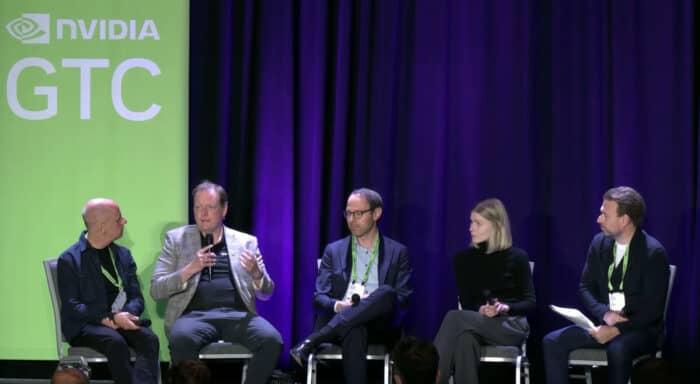 (Seated L-R) Mike Haley, SVP of Research at Autodesk; Francois Valois, VP of Civil Infrastructure at Bentley Systems; Julian Geiger, VP of AI Product and Transformation at Nemetschek; Karoliina Torttila, Director of Artificial Intelligence at Trimble; and Jeff Mottle, Industry Partnership Manager at Nvidia during a NVIDIA GTC panel discussion.
(Seated L-R) Mike Haley, SVP of Research at Autodesk; Francois Valois, VP of Civil Infrastructure at Bentley Systems; Julian Geiger, VP of AI Product and Transformation at Nemetschek; Karoliina Torttila, Director of Artificial Intelligence at Trimble; and Jeff Mottle, Industry Partnership Manager at Nvidia during a NVIDIA GTC panel discussion.The panel also addressed the importance data privacy. “As an industry, we must adopt ethical, responsible AI practices and protocols, which starts with proper AI data policy from software vendors, and with AI training and workforce education,” Valois said. For example, OpenSite+ users maintain control over their data while training the AI.
Valois noted that Bentley is using mostly synthetic data to train its model. Unlike real-world data, synthetic data has all the statistical, mathematical and other properties the AI model needs, but the data is simulated. “To train OpenSite+, we didn’t need 20,000 drawings,” he says. “We used synthetic data and then we used open-source data.”
He elaborated: “We’re a conservative company in the sense that we believe that our users’ data is always their data, and we don’t use it for training our AI models. But we’re also innovative and find ways to use generative AI and lead in the infrastructure sector. This creates a solid foundation to responsibly guide the development of AI models.”
Valois believes this approach will become even more important as countries, along with political and economic unions, further develop their AI regulations. The EU, for example, has the general data protection regulation (GDPR) that governs how individuals’ personal data may be used. “The EU AI Act, as well as other laws like GDPR, encourage us all to think about how we gather, use and implement AI, especially in training scenarios,” he says. “We need to secure data and use it responsibly.”
Valois says data privacy and security are at the base of the pyramid that will enable AI and generative AI applications to grow in the infrastructure sector—and to secure the trust of the industry. These applications will “augment, not replace, human design and creativity,” he says. “We will not start by focusing on complex design problems, but rather on automating demanding and mundane tasks—such as drawing production—with the goal to let our users spend more time doing engineering and get the industry to adopt even more digital twins. That was my message, and when I shared it, I could tell that it resonated.”

